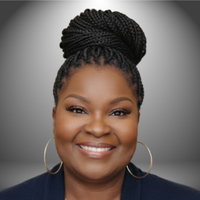
As a Profit Strategist, I see many brilliant women professional service providers such as coaches, consultants, etc. undervalue their services or get derailed by pricing objections. Pricing isn't just a number—it's a critical component of your overall business strategy.
If you’re ready to move from inconsistent revenue to a predictable profit pipeline, here are five non-negotiable rules for how you approach your service pricing:
1. Pricing is Not Personal. Period.
Never be offended when a prospective client tells you your price is "too high." Their objection is never about you or your value; it’s about their budget, their readiness, or their perceived value of the solution. Your job is to listen, not lower your price. Do not let an objection trigger self-doubt or pricing panic.
2. Compete on Value, Never Price
Your goal is not to win the race to the bottom. Working hard to find clients who will pay the lowest price leads straight to burnout and an inconsistent revenue stream. Instead, work hard to find clients who will pay the highest price because they understand and trust the transformation you provide.
This requires consistently demonstrating your expertise, building a premium brand, and clearly articulating the financial and emotional costs of not solving the problem.
3. Separate Money Mindset from Pricing Strategy
Do not make it your mission to change someone’s money mindset to convince them to buy your service. Money trauma is real. They may be dealing with underlying experiences that are far beyond the scope of a sales conversation.
Instead of fighting for the sale, respect their journey. Direct your energy toward finding prospects who already value specialized, professional services—those who understand the difference between shopping for a commodity and investing in a true partnership.
4. Always Seek the Win-Win
When you structure your pricing and engagement, always aim for a mutual win. This means finding clients who also appreciate and practice a win-win mindset. When there is mutual respect, you create long-term business relationships where clients are happy to pay your rate, refer you enthusiastically, and value your time. This protects your energy and builds a reliable referral network.
5. Be Strategic: Don't Rely on Just One Pricing Model
When considering your rates, look at all the options:
- Value-Based Pricing: What is the specific value your service brings to that particular client? This requires a conversation to understand the urgency, the pain, and the cost of the problem to them. One client may happily pay $XXX, while another pays 50% more based on the urgency of their situation.
- Fixed-Fee Pricing: If you use fixed fees, you must become excellent at scoping the work. Always consider up-front diagnostic work (for which you should be paid) to ensure you accurately scope the project and protect your profit margin.
As a Profit Strategist and full time entrepreneur for over 20 years, I help women transform inconsistent revenue into a predictable profit pipeline with an effective blend of strategic coaching and hands-on financial support.
If you are a woman coach, consultant, trainer, or other type of professional service provider ready to stop guessing and start scaling your profit, let's talk strategy.
Book a FREE Clarity Call and explore how we can build your predictable profit pipeline together.
Want to stop guessing and start building a business with clear and realistic revenue targets? Download my FREE Revenue Roadmap™ Guidebook and Bonus Video Walkthrough. This 5-step framework will help you calculate your business's true earning potential so you can build a strategy that's based on time, capacity, and real numbers.

Understanding Your Money Ecosystem: The Five Key Components of a Healthy Business
As a woman entrepreneur in the service-based industry, you’re not just providing a valuable service—you're building a business. And at the heart of any thriving business is a healthy relationship with its finances. Instead of thinking of your money as a collection of separate numbers, it can be incredibly empowering to view it as an interconnected money ecosystem. When all the components are working in harmony, your business can flourish, grow, and provide you with the financial freedom you deserve.
For many entrepreneurs, the financial side of the business can feel like a foreign language. But imagine your business's finances as a garden. You can’t just focus on planting seeds (revenue) and hope for the best. You also have to manage the soil (expenses), protect the young plants (assets), and keep pests away (liabilities). The result is a vibrant, thriving garden (profit) that provides for you long into the future. That’s the holistic perspective this ecosystem model provides.
Let's break down the five key components of this ecosystem and how they all work together.
1. Revenue: The Lifeblood of Your Business
What it is: Revenue is the total income your business generates from selling your services before any expenses are deducted. It’s the cash flowing into your business from your clients.
How it works: Think of revenue as the sun in your ecosystem. It's the primary energy source that fuels everything else. For a service-based business, revenue often comes from client contracts, project fees, monthly retainers, or hourly rates. It's not just about how much you make, but also the stability of your income streams. Diversifying your revenue through various services, packages, or pricing models can help you create a more resilient and predictable cash flow.
Example: Michelle is a freelance graphic designer. In one month, she completes a logo design project for $1,500, a website design for $3,000, and has two clients on a monthly retainer for $500 each. Her total revenue for the month is $1,500 + $3,000 + ($500 * 2) = $5,500.
2. Expenses: The Cost of Doing Business
What they are: Expenses are all the costs you incur to run your business. These are the payments you make to keep the ecosystem running.
How they work: Expenses are like the water and nutrients in your ecosystem. They are necessary for growth, but you must manage them carefully to prevent them from becoming a drain. They can be fixed (rent, software subscriptions) or variable (marketing costs, project-specific materials). A crucial part of a healthy ecosystem is understanding the difference between these costs. Fixed expenses are predictable, while variable expenses often present opportunities to adjust and optimize for better profit margins.
Example: Continuing with Michelle, her monthly expenses include:
- Fixed: Website hosting ($30), Adobe Creative Cloud subscription ($55), business insurance ($50).
- Variable: A one-time stock photo purchase for a client project ($100), and a new font license ($40).Her total monthly expenses are $30 + $55 + $50 + $100 + $40 = $275.
3. Profit: The Reward for Your Hard Work
What it is: Profit is what's left after all your expenses have been subtracted from your revenue. This is the ultimate measure of your business's financial health.
How it works: Profit is the growth and fruit of your ecosystem. It's the reward for successfully managing your revenue and expenses. It's the money you can reinvest in your business, pay yourself, or save for future stability and growth. Thinking about profit strategically means deciding where that money goes—whether it's paying yourself a consistent salary, building a cash buffer for slow months, or investing in a new course to grow your skills. This intentional approach ensures your hard work leads to tangible financial freedom.
Example: Using Michelle’s numbers:
- Revenue: $5,500
- Expenses: $275
- Profit: $5,500 - $275 = $5,225This $5,225 is her profit. From this, she can pay herself, set aside money for taxes, and save for a new computer or a marketing campaign.
4. Assets: The Building Blocks of Your Wealth
What they are: Assets are anything of value that your business owns. They are resources you can use to generate revenue.
How they works: Assets are the sturdy trees and fertile soil of your ecosystem—they build long-term value. For a service-based business, assets might not be physical inventory. They could be intellectual property, like a developed course or a client list, or physical items like your laptop, camera, or office furniture. Your strong reputation and established systems are also powerful, intangible assets. Cultivating these assets is key to scaling, as they allow you to work smarter, not just harder.
Example: Michelle’s assets include her high-powered laptop, her professional camera, the custom-designed templates she sells, and the $5,225 in her business checking account (her profit from the month).
5. Liabilities: The Financial Obligations
What they are: Liabilities are the financial obligations or debts your business owes to others.
How they works: Liabilities are like the necessary maintenance in your ecosystem. They are debts that need to be paid off to keep the system healthy. This could include business loans, outstanding invoices you need to pay, or credit card debt. A healthy ecosystem manages its liabilities so they don't overshadow its assets. Not all debt is bad; a strategic loan for a new piece of equipment can be a great asset. The key is to understand the purpose of your liabilities and have a clear plan for paying them down.
Example: Michelle took out a small business loan to purchase her laptop. She has a monthly loan payment of $150. This loan is a liability. She also has a small balance on her business credit card for an emergency purchase.
The Ecosystem in Action: Cultivating Your Financial Health
Understanding these five components is the first step. The next is to actively cultivate your own money ecosystem. Start by taking regular snapshots of your finances—for example, at the end of each month. This isn't just about tracking numbers; it's about creating a pause point to assess your progress.
This is where you can compare your actual results to the financial goals you've set for your business. Let's say you projected a specific profit for the first six months. By taking that snapshot, you can see exactly where you stand. If your profit for month six is less than projected, this pause point is your opportunity to analyze why. Was a marketing campaign less effective? Did a key client project get delayed? This insight empowers you to adjust your strategy for the next period, ensuring your business development and marketing efforts are aligned with your financial goals. By doing this consistently, you're not just running a business; you're actively steering it toward the success you envisioned. Take one small step today to get to know your money ecosystem better, and watch your business thrive
Want to stop guessing and start building a business with clear and realistic revenue targets? Download my FREE Revenue Roadmap™ Guidebook and Bonus Video Walkthrough. This 5-step framework will help you calculate your business's true earning potential so you can build a strategy that's based on time, capacity, and real numbers.










